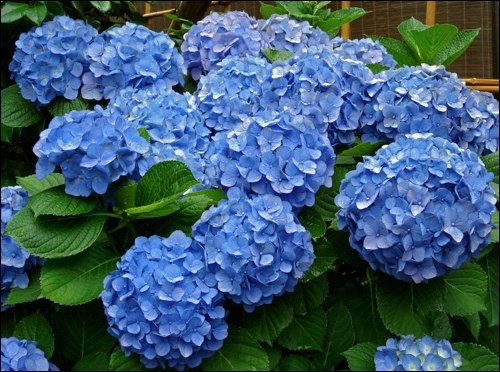Potted hydrangeas (Hydrangea macrophylla) in blue, pink, mauve, bicolour or white should be available at local florists and retailers now for Easter and later, in greater supply, for Mother’s Day. Native to river valleys of China, Japan, and other parts of Asia, they were brought to Europe by plant collectors in the 1700 and 1800s. Since then, more than 600 varieties have been developed.
The name Hydrangea comes from the Greek words hydro, meaning water, and angion, meaning bowl or tub, indicating its love of water and humidity. The species name, macrophylla, means with large leaves. In parts of Europe, this plant is called Hortensia, after Jeanne Baret who later changed her name to Hortense. Her connection was that she was the lover of Philibert Commerson (1727-1773) and he was the French naturalist and botanist who first described it.
Disguised as a man, Baret accompanied Commerson on board ship as his "valet" during his plant-hunting voyage. “To get around a strict law that forbad women from naval vessels, Baret disguised herself as a man, going undetected until her ship landed in Tahiti 18 months later. There, the natives immediately recognized what more than 300 of her fellow crewmembers had failed to: that Baret was a woman.” Talk about being oblivious!
When selecting a hydrangea, look for a bushy plant with large dark leaves, sturdy stalks, and a profusion of buds that are just beginning to flower. Beware of whitish webbing on the undersides of the leaves that may indicate the presence of spider mites. White powder on the leaves may be a sign of powdery mildew.
After bringing a hydrangea home, it's important to ensure that it receives the best possible conditions in terms of light, temperature, water, humidity and nutrition. And under proper conditions, it should last six to eight weeks.
Place it in a cool but bright location such as an east or west-facing window. They do well with a minimum night temperature of 60 F and a range of 65-70 F during the day. Keep it evenly moist and do not allow the soil to dry out. Check it daily (inserting your finger in the medium will tell you if it's moist or dry). Water should be allowed to drain freely from the pot. If it comes wrapped in foil, puncture the foil at the bottom of the pot to allow free drainage. Fertilize it about two weeks after purchase and then weekly with a complete water soluble fertilizer containing major and minor nutrients according to label directions.
Cut off the flower heads once they have finished blooming. Most hydrangeas purchased for spring bloom will not be hardy on the prairies. But you can propagate them by taking cuttings in June and July to increase the size your indoor houseplant collection. Make four-inch cuttings, removing the leaves from the bottom half, and place them in water. They will soon develop roots. Once the roots appear, place them gently but firmly in a mixture of sphagnum and potting soil. Once warm weather is assured, you can even give them a summer holiday outdoors in a shady spot in your garden. Remember: don't allow them to dry out and bring them indoors before danger of frost in fall. Keep them in a cooler area of your home until January. Then cut them back a bit and bring them into a warmer area. Water sparingly until the first flower buds appear.
— This column is provided courtesy of the Saskatchewan Perennial Society (SPS; www.saskperennial.ca; [email protected]; www.facebook.com/saskperennial). Check out our Bulletin Board or Calendar for upcoming garden information sessions, workshops, tours and other events. Consider taking a gardening class at the University of Saskatchewan (http://gardening.usask.ca). There are lots to choose from during April and May.




